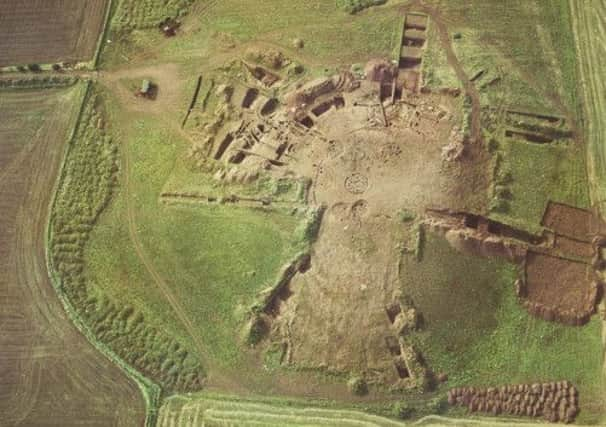Grisly human trophies at East Lothian hill fort


Broxmouth hill fort in East Lothian, which had first been identified from aerial photographs, was examined before the site was destroyed by a cement works.
It had been known that there had been a community of a couple of hundred people living at the fort for almost 1,000 years before the site was abandoned when the Romans left.
Advertisement
Hide AdBut the research, published in the latest edition of the British Archaeology magazine, reveals that fragment of bones belonging to men, women and children who had met violent deaths from sword and axe wounds, were found at the site.
Professor Ian Armit, the Scottish archaeologist who led the team investigating the site, said: “What we found has turned round preconceptions of the site.
“We’ve got a level of detail that would never have been possible before, because of the very large number of high-quality radiocarbon dates.
“They have given us a pretty fine-grained chronology of the site.”
Professor Armit, who studied archaeology at the University of Edinburgh and is now based at the University of Bradford, said that new technology in capturing data from the bone fragments and better statistical analysis had led to the exciting discovery.
He said: “Broxmouth has always been a big iconic site in archaeology but the human bone fragments, stored away in the 1970s, had never been studied before, and give the key to an exciting aspect of the fort which had never been known about before now.
Advertisement
Hide Ad“I do a lot of research with human remains and these fragments show that the victims suffered violent attacks.
“The fragments which were male and female, young and old, belonged to people who were outsiders and not from the fort community. While there is evidence of head-hunting in the Iron Age, there is nothing to suggest that this is the case in Broxmouth. It is more likely to be that they were killed elsewhere during raids and ambushes and bits of the bodies were brought back as human trophies.
Advertisement
Hide Ad“We cannot say if the victims came from 20 miles away, or from 200 miles away.”
The archaeologists also uncovered a cemetery at the site, near Dunbar, containing a tiny proportion of the residents who must have lived there.
Some of the graves were very elaborate, perhaps suggesting that they contained the remains of high-status individuals.
However, despite the violent aspect, Professor Armit said that the site was home to a very settled and stable community, which lasted until about 200AD and was never inhabited again, which seems to have coincided with the time when the Romans withdrew.
“Perhaps that suddenly made the land up for grabs, and destabilised the area,” he said. “It looks as though the people of East Lothian may have been allied with the Romans but the fact that the dates fit doesn’t prove that there was a causal relationship.”
Rod McCullagh, Historic Scotland’s senior archaeology manager, who has also worked as part of the dig, said: “Broxmouth is a hugely exciting site. The dig has taught us many things about the rituals and customs and is a precious window into our history, showing us a society in constant change and adapting to new ways of survival, including defending itself and educating its young.”